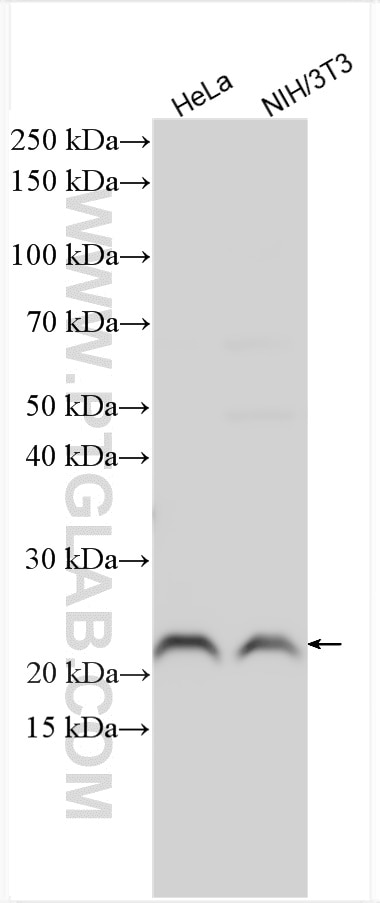CNBP Polyclonal antibody
CNBP Polyclonal Antibody for WB, ELISA
Host / Isotype
Rabbit / IgG
Reactivity
human, mouse
Applications
WB, ELISA
Conjugate
Unconjugated
Cat no : 12103-1-AP
Synonyms
Validation Data Gallery
Tested Applications
| Positive WB detected in | HeLa cells, NIH/3T3 cells |
Recommended dilution
| Application | Dilution |
|---|---|
| Western Blot (WB) | WB : 1:500-1:2000 |
| It is recommended that this reagent should be titrated in each testing system to obtain optimal results. | |
| Sample-dependent, Check data in validation data gallery. | |
Product Information
12103-1-AP targets CNBP in WB, ELISA applications and shows reactivity with human, mouse samples.
| Tested Reactivity | human, mouse |
| Host / Isotype | Rabbit / IgG |
| Class | Polyclonal |
| Type | Antibody |
| Immunogen | CNBP fusion protein Ag2747 |
| Full Name | CCHC-type zinc finger, nucleic acid binding protein |
| Calculated Molecular Weight | 170 aa, 19 kDa |
| Observed Molecular Weight | 21 kDa |
| GenBank Accession Number | BC014911 |
| Gene Symbol | CNBP |
| Gene ID (NCBI) | 7555 |
| Conjugate | Unconjugated |
| Form | Liquid |
| Purification Method | Antigen affinity purification |
| Storage Buffer | PBS with 0.02% sodium azide and 50% glycerol pH 7.3. |
| Storage Conditions | Store at -20°C. Stable for one year after shipment. Aliquoting is unnecessary for -20oC storage. 20ul sizes contain 0.1% BSA. |
Background Information
Cellular nucleic acid binding protein (CNBP) has been implicated in vertebrate craniofacial development and in myotonic dystrophy type 2 (DM2) and sporadic inclusion body myositis (sIBM) human diseases [PMID:21277287]. CNBP is a small and strikingly conserved single-stranded nucleic acid binding protein that is able to bind DNA as well as RNA. This ssDNA- and RNA-binding protein with broad sequence specificity is participated in diverse cellular functions, including transcription, translation and through them cell proliferation and survival [PMID:20960530].
Protocols
| Product Specific Protocols | |
|---|---|
| WB protocol for CNBP antibody 12103-1-AP | Download protocol |
| Standard Protocols | |
|---|---|
| Click here to view our Standard Protocols |


